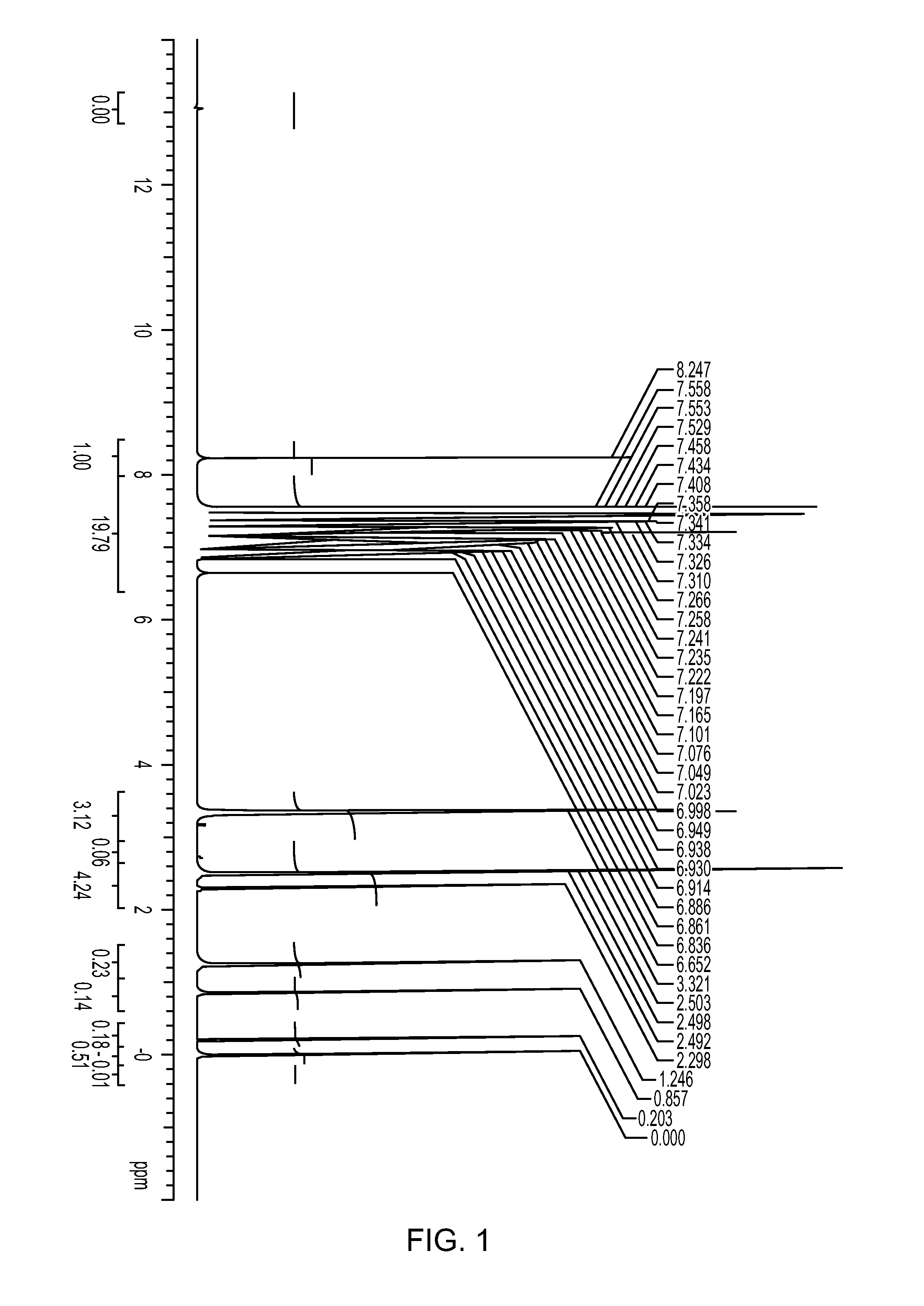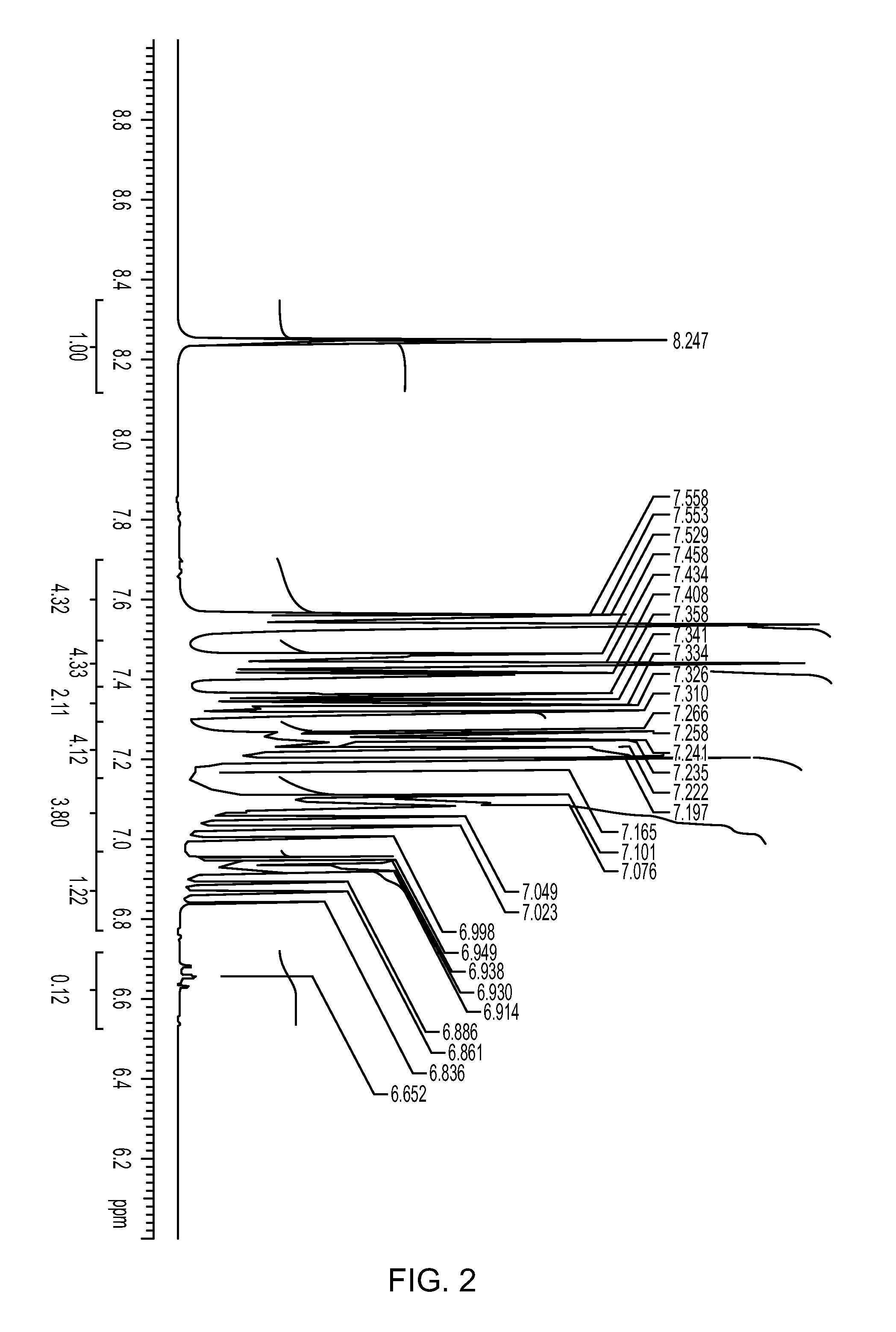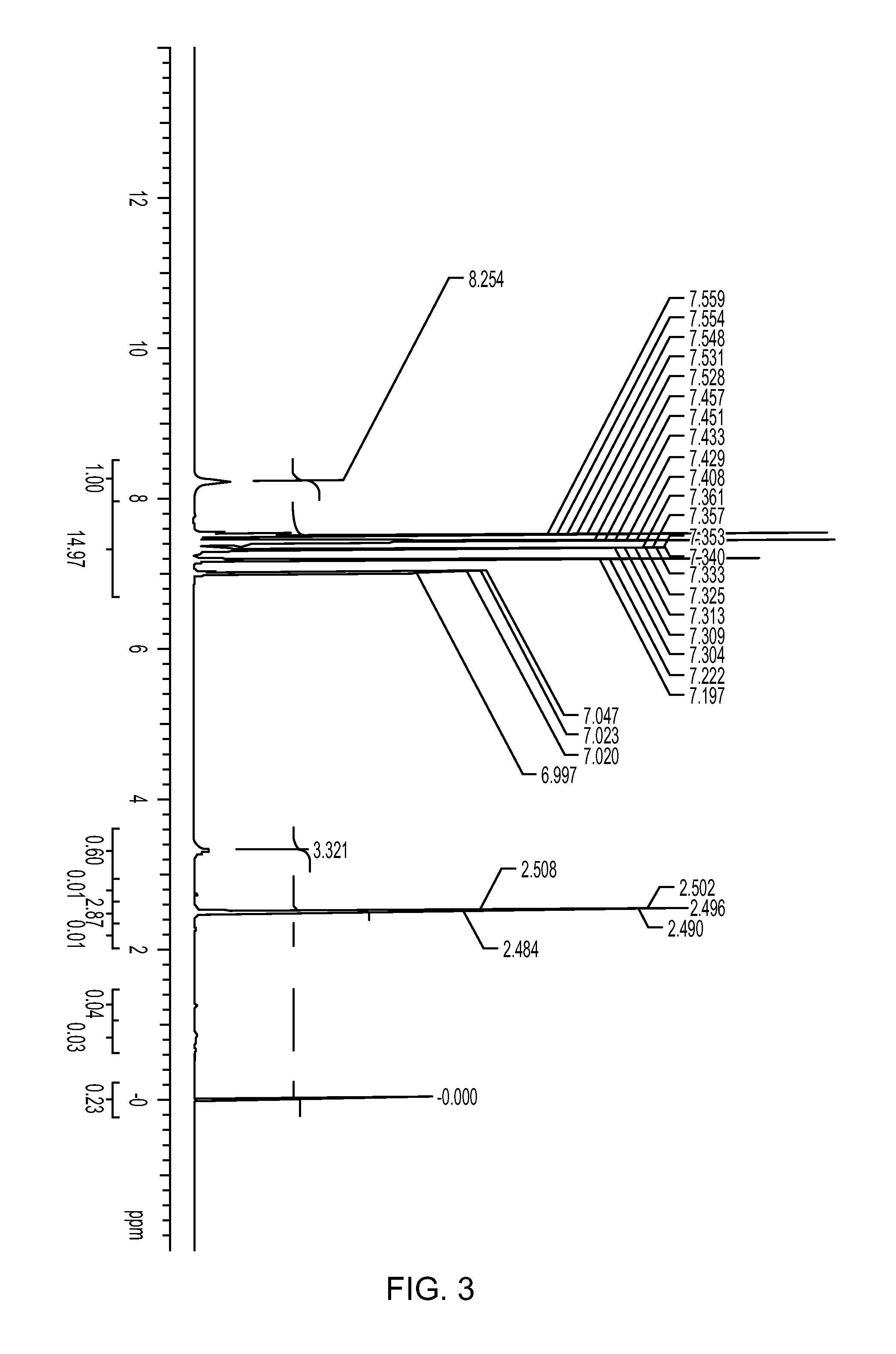Organoaluminum compound
a technology of organic compounds and compounds, applied in the field of organic compounds, can solve the problems of unsatisfactory diastereoselectivity of isopulegol, and achieve the effects of high diastereoselectivity, high yield and high selectivity
- Summary
- Abstract
- Description
- Claims
- Application Information
AI Technical Summary
Benefits of technology
Problems solved by technology
Method used
Image
Examples
example 1-1
Preparation of Organoaluminum Compound
[0173]493 mg (2.0 mmol) of 2,6-diphenylphenol was placed in a 50 ml Schlenk flask under a nitrogen atmosphere. After nitrogen substitution, 10 ml of heptane and 0.58 ml (10% by mass, 1.00 mmol) of a methylaluminoxane-toluene solution were sequentially added to the flask, and the resulting mixture was stirred at room temperature overnight. The solvent was distilled away to obtain a white solid. The solid obtained was dissolved in DMSO-d6, and it was measured with 1H-NMR. Peak of aluminum complex in addition to diphenylphenol was confirmed. NMR charts (FIG. 1) of the ligand and the catalyst and an enlarged view of low magnetic field side (FIG. 2) are shown. As reference views, NMR chart (FIG. 3) of the ligand (2,6-diphenylphenol) and an enlarged view (FIG. 4) of low magnetic field side are shown.
example 1-2
Synthesis of l-Isopulegol
[0174]4.6 ml of toluene was added to the organoaluminum compound synthesized according to Example 1-1 under a nitrogen atmosphere, and the temperature in the system was cooled to 0 to 5° C. 1.54 g (10 mmol) of d-citronellal was added dropwise to the resulting mixture, followed by stirring at 0 to 5° C. overnight. After completion of the reaction, 2 ml of water was added to the reaction mixture, and an organic layer was analyzed with gas chromatography. As a result, substrate conversion was 70.5%, isopulegol conversion was 814%, and the ratio of l-n-isopulegol to the other isomers was 97.1:2.9.
example 2-1
Preparation of Organoaluminum Compound
[0175]197 mg (0.80 mmol) of 2,6-diphenylphenol was placed in a 50 ml Schlenk flask. After nitrogen substitution, 9.3 ml of toluene and 0.12 ml (10% by mass, 0.20 mmol) of a methylaluminoxane-toluene solution were sequentially added to the flask, and the resulting mixture was stirred at room temperature for 1 hour, thereby obtaining a catalyst solution.
PUM
| Property | Measurement | Unit |
|---|---|---|
| pressure | aaaaa | aaaaa |
| pressure | aaaaa | aaaaa |
| temperature | aaaaa | aaaaa |
Abstract
Description
Claims
Application Information
 Login to View More
Login to View More - R&D
- Intellectual Property
- Life Sciences
- Materials
- Tech Scout
- Unparalleled Data Quality
- Higher Quality Content
- 60% Fewer Hallucinations
Browse by: Latest US Patents, China's latest patents, Technical Efficacy Thesaurus, Application Domain, Technology Topic, Popular Technical Reports.
© 2025 PatSnap. All rights reserved.Legal|Privacy policy|Modern Slavery Act Transparency Statement|Sitemap|About US| Contact US: help@patsnap.com



